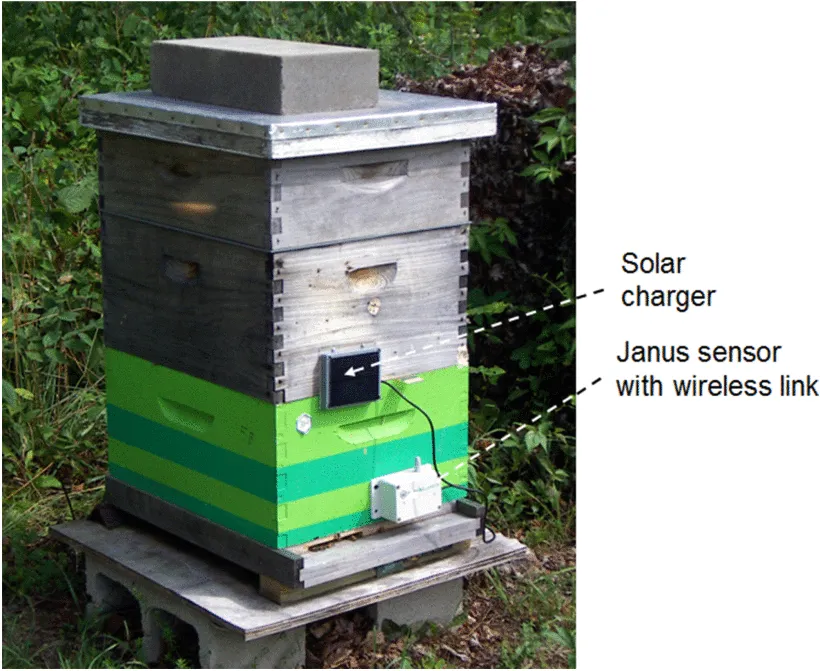Janus: A Combined Radar and Vibration Sensor for Beehive Monitoring
Besides producing honey, honeybees are considered the most significant natural pollinators. The beekeepers need to monitor the beehives regularly to maintain their productivity. Swarming and robbing are two events that require immediate intervention and damage control in any apiary. Swarming is a natural phenomenon when about half of the worker and queen bees leave the hive to make another colony. As the name implies, robbing occurs when bees from a stronger colony attack and steal honey from a beehive of a weaker colony.
Vibration and sound, together referred to as vibroacoustic signals, are significantly employed by honeybees for intracolonial communication. By carefully observing the vibroacoustic signals from the beehive and the sound created by the flight of bee clouds, experienced apiarists may distinguish between swarming, robbing, and other typical but innocuous bee activities.
Using a microphone inside a hive to capture sounds or accelerometers to monitor vibrations in and around the hive may give inaccurate data over time. Other existing systems are quite expensive. In a recent novel approach, a low-power continuous-wave Doppler radar sensor to monitor any unusual motion near the hive combined with a piezoelectric transducer to sense the inside-hive abnormal activity is reported to develop a two-faced swarm detection system. This system is aptly named JANUS, after the two-faced Roman mythological god.
A piezoelectric transducer, commonly used in acoustic guitar, was used to pick up incidental vibrations produced by a bee on the hive structure which is mostly below 600 Hz. The analog signals from sensors are amplified with about 70-dB gain and a 300–2000 Hz frequency response before being fed to a 12-bit analog-to-digital converter (ADC). It takes care of any unusual bee activities inside the hive indicative of swarm.
A 24-GHz CW Doppler radar, found in automobile collision avoidance systems, is placed facing outward to record bees' flight near the hive corresponding to initialization of robbing. No adverse radiation effect is observed because of this radar as it is so low-power.
These sensors are mounted on the outer wall of hives above the hive entrance, enabling easy maintenance. To cover multiple hives a solid-state timer is used to actuate a microprocessor at approximately 2 min intervals, which, in turn, collects 20 second long samples from both sensors serially from each hive and send to the control unit.
It is found that the root-mean-squared (RMS) values of concurrent radar and vibration measurements are highly correlated, providing a good indication of bee activities.
Radar and vibration RMS levels for a ‘swarming’ event were very high and highly correlated. The vibrational level remains high during a ‘robbing’ situation. Although the radar signals in the case of ‘orientation flight’ are similar to ‘swarming’, the correlation between concurrent radar and vibrational signals is very low, differentiating it from ‘swarming’.
It is to note that seasonal factors like ambient temperature and solar radiation also influence the level of bees activities which might lead to false alarms. This may be addressed by using principal component analysis (PCA) of all activities during a longer duration.
Though there were systems to monitor activities before JANUS, it wasn't easy to automatically detect the bees activities in advance. The JANUS is a low-power, low-cost, remote, easy-to-use system capable of detecting the biological activities of bees. However, there is scope of improving the detection performance, i.e., reducing false alarms and making it viable for commercial use.




